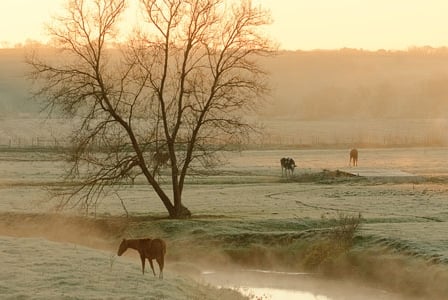
A large amount of carbon dioxide is entering the atmosphere from a source not previously accounted for: our rivers and streams, according to scientists in the US.
We know that carbon dioxide is being released into the Earth’s atmosphere by sources including increased human activity. The resulting greenhouse gases lead to global warming and ultimately to irreversible changes in our eco-system. We’ve heard all this before, but what we haven’t heard before is that our rivers and streams also play a significant role in contributing to the atmosphere’s increasing CO2 levels.
Researchers in the US analyzed samples from more than 4,000 rivers and streams across the country. They found that “significant amounts of carbon contained in land, which first is absorbed by plants and forests through the air, is leaking into streams and rivers, then released into the atmosphere before reaching coastal waterways.”
In their study, being published this month in the journal Nature Geoscience, the researchers from Yale University show that streams and rivers are a significant source of atmospheric CO2, enough for “terrestrial modelers to take note of.” This means that any future estimates of atmospheric CO2 levels must also take into account the contribution from streams and rivers.
They also indicate that “as the climate heats up there will be more rain and snow, and that an increase in precipitation will result in even more terrestrial carbon flowing into rivers and streams and being released into the atmosphere.”
In layman’s terms, the amount of CO2 the surveys measured is “equal to a car burning 40 billion gallons of gasoline, enough to drive back and forth to the moon 3.4 million times.”
Put in bad news, good news terms: CO2 emissions are higher than we thought, but at least now we know about it. Will politicians pay attention?



